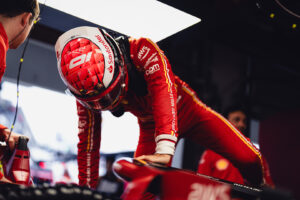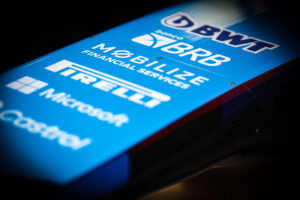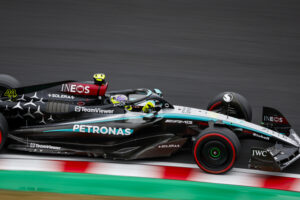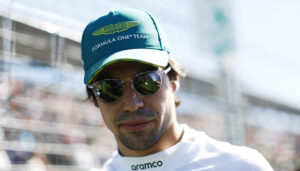Italy’s contribution to Formula One over the years is rivalled by few other nations. Even prior to the inaugural World Championship for Drivers in 1950, Italy, with their superior drivers and machinery were winning as well as hosting many of the major races on the Grand Prix calendar. Unfortunately for Italy in modern Formula One, the performance of the mighty Ferrari has not been up to scratch, and there has not even been an Italian Formula One driver on the grid since Jarno Trulli and Vitantonio Liuzzi were at the very back in 2011. So who were the Italian Formula One drivers of the past?
Before the World Championship
Italy’s first win in a race dubbed a ‘Grand Prix’ came well over 100 years ago in the 1907 French Grand Prix as Felice Nazzaro beat Hungarian Ferenc Szisz in a result which reversed the result of the previous event. The first Italian Grand Prix would be hosted after the First World War in 1921, but Italian drivers were tasting success in other minor races – most notably the famous Targa Florio. A year later the first Italian Grand Prix to be held at Monza took place, won by Italian Pietro Bordino. Over the next few years, three big Italian names would come to the fore – Enzo Ferrari, Tazio Nuvolari and Antonio Ascari. Unfortunately for Ascari, he was tragically killed at the French Grand Prix at the peak of his powers. His Belgian Grand Prix success in 1925 however helped Alfa Romeo to the first World Manufacturers’ Championship.
Ferrari initially started his career as a driver, but following Ascari’s death he decided to focus on car development instead of driving. Nuvolari was offered a test with Alfa Romeo, but he crashed the car. France would dominate the major races in Europe over the next couple of years, but Italy was having success in the minor races, with Nuvolari taking his first Grand Prix win at Rome in 1927. Nuvolari found himself racing for Alfa Romeo in the end and dominated the 1932 European Drivers’ Championship, a year after fellow Italian Ferdinando Minoia won the inaugural championship. Nuvolari dominated the calendar in 1933 but only won a handful of races in 1934.
For 1935 the Germans came fighting back in style, and would be on a completely different level to what the French or the Italians could produce up until the Second World War. Italian drivers would take the occasional spoil from the Germans, but much of their winning was done in the white of Auto Union or the Silver of Mercedes-Benz. After the war, spoils were often split between French and Italian drivers, usually in Italian machinery. It would provide a strong platform for the new World Championship for Drivers starting in 1950.
1950s – A Golden Age
Alfa Romeo brought the car to beat into the inaugural season of what we now call Formula One, but Talbot and Ferrari would try to run them close. Three of the top five in the first World Championship season would be Italian – the eventual winner Giuseppe Farina, third-placed Luigi Fagioli and fifth-placed Alberto Ascari – the son of Antonio. Farina would split all of the six Grand Prix equally between himself and his team mate – Juan Manuel Fangio. In 1951 Ascari would run Fangio close, with Farina and Fagioli also taking a race victory each.
1952 saw Fangio injured and Alfa Romeo withdraw so that paved the way for Ascari to decimate the competition (including new team mate Farina) in his Ferrari. Fellow team mate Piero Taruffi would be the only other driver to taste success in a race outside of the Indianapolis 500. Italian (and a British) Ferrari drivers would dominate again in 1953, but a now-recovered Fangio, now driving for Maserati would win the final round of the championship. 1954 would become the first season without an Italian victor as Fangio dominated despite his mid-season switch to a newly-rejuvenated Mercedes. 1955 would be a similar story, with tragedy striking the world of motorsport as Ascari, like his father was killed. The final Italian victor of the decade would be Luigi Musso, in a shared drive with Fangio in 1956.
1960s – Minor Shock Successes
By the end of the 1950s interest and the talent pool seemed to dwindle and Italy was left without a full-time driver. There was a shock result in 1961 as Giancarlo Baghetti would win the French Grand Prix in a private Ferrari – his very first Grand Prix victory at the very first attempt. Baghetti, along with Lorenzo Bandini were offered factory drives for the following season but the ‘Garagistes’ came to the fore and Ferrari’s equipment was unable to match what the British could produce regardless of budget. Ferrari would eventually taste a major championship in 1964 with John Surtees where Bandini played a pivotal role in assisting the Brit to the title. Bandini would taste victory for the only time in his career at the Austrian Grand Prix that year.
Surtees would leave Ferrari mid-way through 1966 which would make room for Ludovico Scarfiotti – who would take a shock win at Monza that year. Despite this, Italy would again find itself without any full-time drivers, let alone any major success. To add to the pain, Bandini would be killed at Monaco in 1967. By the end of the decade the only Italian driver to start a race did not even race under the Italian flag – Mario Andretti was born in Italy but raced under the flag of the United States.
1970s – Potential Stars Shine Through
Italy had at least one driver to cheer for in 1970, as Andrea de Adamich attempted to qualify for many of the races in an Alfa Romeo-powered McLaren. Ignazio Giunti would also make sporadic appearances for Ferrari, scoring a few points here and there. De Adamich would finally get a decent break in 1972, driving for Team Surtees, where he started every race. 1973 would see Arturo Merzario make his first full campaign with Ferrari. 1974 would see the debut for Vittorio Brambilla, who would take a shock win in the shortened Austrian Grand Prix a year later. Also of note in 1975 was the success of Lella Lombardi, who to date remains the only woman to finish a Grand Prix in a points-paying position.
1976 would be tough for Italy’s drivers, with Brambilla being the only Italian driver to take a point. 1977 would see the debut of Riccardo Patrese with the Shadow team. 1978 would see Patrese take his maiden podium, but also be banned from the United States Grand Prix for his involvement in the crash which claimed the life of Ronnie Peterson. Andretti would take the championship that year – the most recent time a driver born in Italy has done so. The end of the decade would see the arrival of the highly-rated Elio de Angelis, who would take a fine fourth in the final Grand Prix of the season.
1980s – An Italian Revival
1980 saw both de Angelis and Patrese find their way onto the podium. Bruno Giacomelli would also find his way into a full-time seat. 1981 would see more rostrum visits – this time for Patrese and for Giacomelli but de Angelis would finish the year with the most points. Also making their full debut were Andrea de Cesaris, with the McLaren team, and Michele Alboreto with Tyrrell. 1982 would finally see an Italian on the top of the rostrum not once, but three times. Patrese would take a shock victory in the crazy 1982 Monaco Grand Prix, whilst de Angelis would take his maiden win in the Austrian Grand Prix and Alboreto taking his maiden win at Caesar’s Palace. These victories however were contrasted by the death of Riccardo Paletti in what would be only his second start.
Unreliability and accidents would prevent Italian drivers of much success in 1983; however Alboreto took victory again stateside in the Detroit Grand Prix. Patrese had to watch team leader Nelson Piquet take the title but he would take the spoils in the final race of the year. De Cesaris also found his way onto the rostrum a couple of times, making it an Italian 1-2 at the South African Grand Prix. 1984 would be dominated by the McLaren pair of Alain Prost and Niki Lauda however Alboreto (now with Ferrari) would take his second victory and de Angelis would finish a fine third in the championship. The Fabi brothers – Teo and Corrado would make their debut too.
Alboreto would have a very strong run in the 1985 season, taking two wins and six further podiums from the first ten races. He would run Prost’s McLaren close, but failure to score in any of the final five races would see the championship go to the Frenchman. De Angelis would take a shock second race win at the San Marino Grand Prix held in Italy, following a disqualification awarded to Prost. De Angelis would finish just five points behind his team mate – a young Ayrton Senna. 1986 would be dominated by Lotus, McLaren and Williams. Alboreto was humbled by his team mate Stefan Johansson, and de Angelis was tragically killed at Paul Ricard.
1986 saw the debut of Alessandro Nannini and 1987 would see the debut of Alex Caffi and Ivan Capelli. The 1987 season would see visits to the rostrum for Alboreto, Teo Fabi, Patrese and for de Cesaris, but without victory. 1988 was a write-off for anybody who wasn’t driving a McLaren, but Alboreto was the second part of an emotional Ferrari 1-2 at Monza after the death of the founder. Alboreto, Nannini and Capelli took seven podiums between them that year. 1989 would close off the decade with Patrese in a strong third position behind the McLarens with six podiums, and Nannini taking his only race victory in controversial circumstances after the two McLarens came together at Suzuka. Alboreto would be replaced mid-season at Tyrrell by French-Italian Jean Alesi.
1990s – High Hopes but Winless
Alesi shocked the world by fighting Senna hard in the first race of the new decade however it would be Patrese who would continue his solid form by taking victory at San Marino, where Nannini finished third. Despite two further podiums that season, Nannini was dropped for Roberto Moreno. For 1991, Williams would take the fight to McLaren, and Patrese and team mate Nigel Mansell would nearly take Williams to the Constructors’ Championship. Patrese took two wins to Mansell’s five. The highly sophisticated FW14B was absolutely supreme in Mansell’s hands in 1992 and Patrese simply had no answer to his team mate who walked to the title. Patrese would only take one race victory that season despite having such a superior car and he was dropped for Prost and Damon Hill.
The next few seasons saw a lull in results from Italian drivers in addition to the quantity of Italian drivers. Patrese would visit the podium on a few occasions in 1993 as Michael Schumacher’s team mate but many of the names from the start of the decade and the decade previous were dropping away and the names coming through including Alex Zanardi, Gianni Morbidelli, Luca Badoer and Pierluigi Martini were either not bringing the results or were not equipped sufficiently to show their respective talents. Patrese would retire at the end of 1993, leaving no Italian in any top seat in Formula One.
1994 would only see one Italian driver make an appearance on the podium – Nicola Larini, replacing an injured Jean Alesi in subdued circumstances at the San Marino Grand Prix. 1995 would again see just one rostrum for Italy – Morbidelli taking a shock podium for the Footwork team at the season finale. However, numbers dwindled drastically during 1996 and by the season just one driver – Giovanni Lavaggi was representing Italy in F1. However for 1997 two new kids were on the block and their impact in F1 was almost instant. Giancarlo Fisichella brought home two podiums in his first season with the Jordan team and Jarno Trulli impressed in outings for both Minardi and later Prost. Fisichella moved to Benetton for 1998, taking his first pole as well as a pair of second places mid-season. Trulli moved full-time to Prost and would take the only point for the team in that year. Both drivers would take runner-up spots in the 1999 season.
2000s – Returning to Winning Ways
Much was expected of Trulli’s move to the Jordan team for 2000 but ultimately the team was unable to build on a breakthrough 1999 season. Fisichella took more podiums but the elusive win seemed impossible to come by. 2001 was not much better, with Fisichella’s lone third place at Hungary being the outstanding result. 2002 saw the Italian drivers swap teams, with Fisichella off to Jordan alongside Takuma Sato and Trulli at the works Renault team alongside Jenson Button. Results were not immediate from the new team and driver combinations, but both performed well against their team mates. 2003 saw Fisichella take a shock maiden win at the Brazilian Grand Prix, although the result was not confirmed until days after the race (Kimi Raikkonen was initially awarded the win, but the red flag rules declared Fisichella the winner). Trulli would take a single podium at Germany but across the season he was outdriven by his young team mate Fernando Alonso.
2004 would be a much better season for Trulli, who would take a brilliant maiden victory from pole at the Monaco Grand Prix. However, despite outscoring Alonso, he fell out with the team, and was sacked before the end of the season. He would however, resurface at Toyota. Fisichella headed to Sauber, where he was able to soundly beat his young team mate Felipe Massa. Both Giorgio Pantano and Gianmaria Bruni would make their Grand Prix debuts in 2004, but their F1 careers were short-lived. Fisichella replaced Trulli at Renault for 2005 and won first time out for the team after a crazy qualifying session. That would be the only real success he would have that year however, as he spent much of the year watching team mate Alonso fighting for the title. Trulli would take a shock pole at Indianapolis, however he failed to start from there as all of the Michelin runners would withdraw from that race over safety fears.
2006 saw Fisichella again taking an early race win (this time at the Malaysian Grand Prix) but again he had to play second-fiddle to Alonso. He did, however, guarantee that Renault took the Constructors’ Championship two years in a row. Trulli struggled in a Toyota which wasn’t up to par despite the budget but remained with the team for 2007. Neither Fisichella, Trulli or fellow Italian Vitantonio Liuzzi would stand on the podium in 2007, and both Fisichella and Liuzzi moved onto Force India (originally Jordan) for 2008 in a race driver and test driver role respectively.
Force India struggled in 2008 and that left Fisichella well out of the points on every occasion. Trulli took a sole podium at France and generally had the upper hand on new team mate Timo Glock. Major regulation changes for 2009 looked set to shake things up however. The pecking order did change and with a controversial diffuser Toyota found more pace. Trulli notched up a handful of podiums and a final pole position of his career, whilst Fisichella would take a surprise pole position at Belgium as well as Force India’s first points and podium. Fisichella was then called up by Ferrari, allowing Liuzzi to make his F1 return. He duly impressed, and secured a seat for 2010.
2010s – A Sharp Demise
Fisichella left F1 to join Ferrari’s sportscar programme for 2010, and Toyota withdrew from the sport as well. Trulli was picked up by the brand new Lotus Racing team, but the team was forced to compete in an environment in which it did not sign up to. Trulli also struggled against Heikki Kovalainen, who got more out of the underperforming chassis. 2011 saw Liuzzi ditched by Force India and forced to join the HRT team, where he was used as a yardstick for Red Bull youngster Daniel Ricciardo. Trulli left Lotus at the end of 2011 and into retirement, and Liuzzi followed suit. Both would pop up in other series in the future, but their F1 careers were over, as was the presence of Italian drivers in F1.
But what about the future? There are a couple of impressive youngsters in the lower formulae – Antonio Giovinazzi, Luca Ghiotto, Raffaele Marciello and Antonio Fuoco are all winning races on F1 weekends. It is surely only a matter of time before we see more Italian success in F1.
Main Photo






